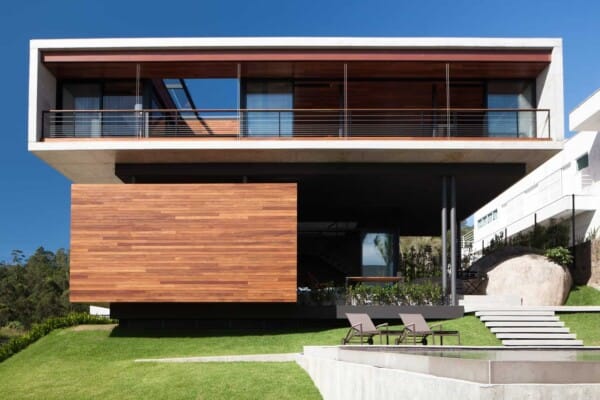Seattle-based studio Finne Architects has renovated this 1950’s home located on a secluded, wooded site about 25 miles north of Seattle, Washington, USA.
Lake Forest Park Renovation by Finne Architects:
“Located on a secluded, wooded site about 25 miles north of Seattle, a 1950’s Northwest Contemporary house has been completely renovated while retaining the spirit of the original house. With extensive new windows and glazed roof monitors, the renovated house appears to be a glass pavilion in the forest.
The floor plan has been re-organized to create a spacious, light-filled Master Bedroom and Master Bath, with each space surrounded by glass and views to the forest. The main living and dining spaces have been slightly enlarged, and a new roof monitor with high windows has been added to bring soft natural light to the entire space. The new, enlarged kitchen has counters in quartz and cast-glass, with continuous windows extending directly to the counter level.
The existing hemlock ceiling with exposed fir beams in roughly half the house has been retained, and new fir ceilings have been added to the remainder of the house. The existing terrazzo flooring has been re-finished, with new areas of terrazzo added in a complementary color.
Consistent with the original simplicity and clarity of the house, a palette of new materials has been added to create powerful juxtapositions of texture and color, allowing each material to benefit from adjacent contrasting surfaces. Casework consists primarily of cherry panels: some panels are smooth while others have been milled with a CNC (computer numeric controlled) router to make a texture evocative of “woven wood.” A 30-foot long accent wall adjacent to the dining and kitchen areas has been clad entirely in weathered steel panels. Suspended casework on the steel wall utilizes either resin panels with natural grasses or textured cherry wood, both materials set against the variegated umber colors of the steel.
In keeping with other FINNE projects, this renovation has pursued the idea of “crafted modernism,” the enrichment of a modernist aesthetic with highly personal, crafted materials and objects. Custom fabrications included the cast-glass kitchen counter, steel wall panels, suspended steel mirror frames, laser-cut steel shade valences, custom steel lighting bars, hand-blown glass light fixtures (TROMS pendants), and a number of custom furniture pieces. The glass wall between the master bedroom and master bathroom has been transformed with the use of a hand-drawn pattern in etched glass, with the pattern being more dense at the bottom (for a sense of privacy) and increasingly transparent at the top.
Sustainable design practices were integral to the project from the start. Radiant heating under terrazzo flooring has created an even heat source with maximum energy efficiency. High clerestory windows bring natural light deep into the house and motorized operators allow for venting during summer months. Many green materials (such as resin panels, quartz counters, linoleum, low VOC paint, and sustainable wood products) were used in the project. But above all, it is the fact of renovation itself that is inherently sustainable and captures all the embodied energy of the original 1950’s house, which has now been given a fresh life. The intense craftsmanship and detailing of the renovation speaks also to a very important sustainable principle: build it well and it will last for many, many years!
Sustainable design is not simply creating a laundry-list of green materials; rather, it is creating enduring building form and construction with appropriate long life-cycle, low-energy consuming materials.”
Photos courtesy of Finne Architects
































